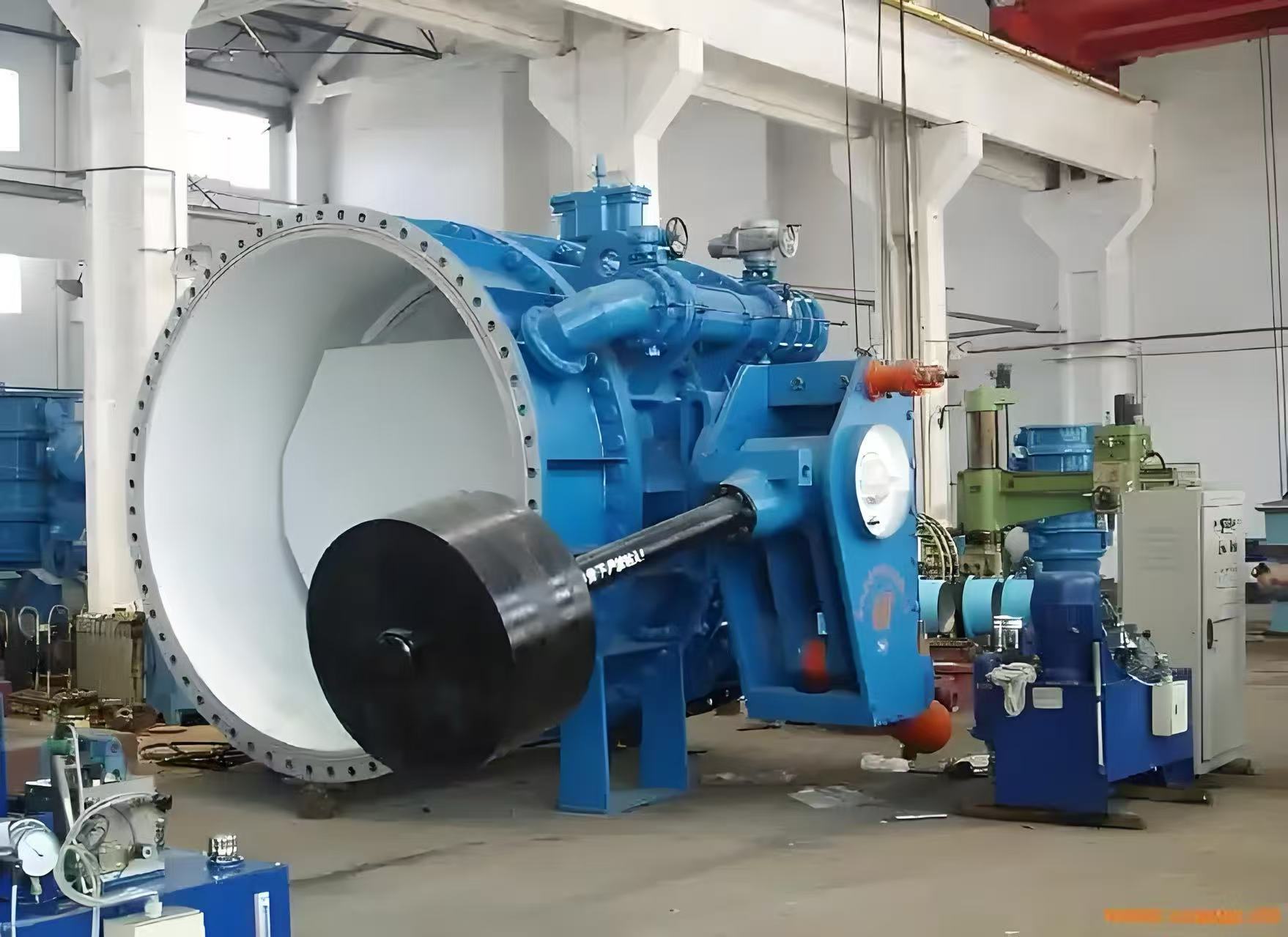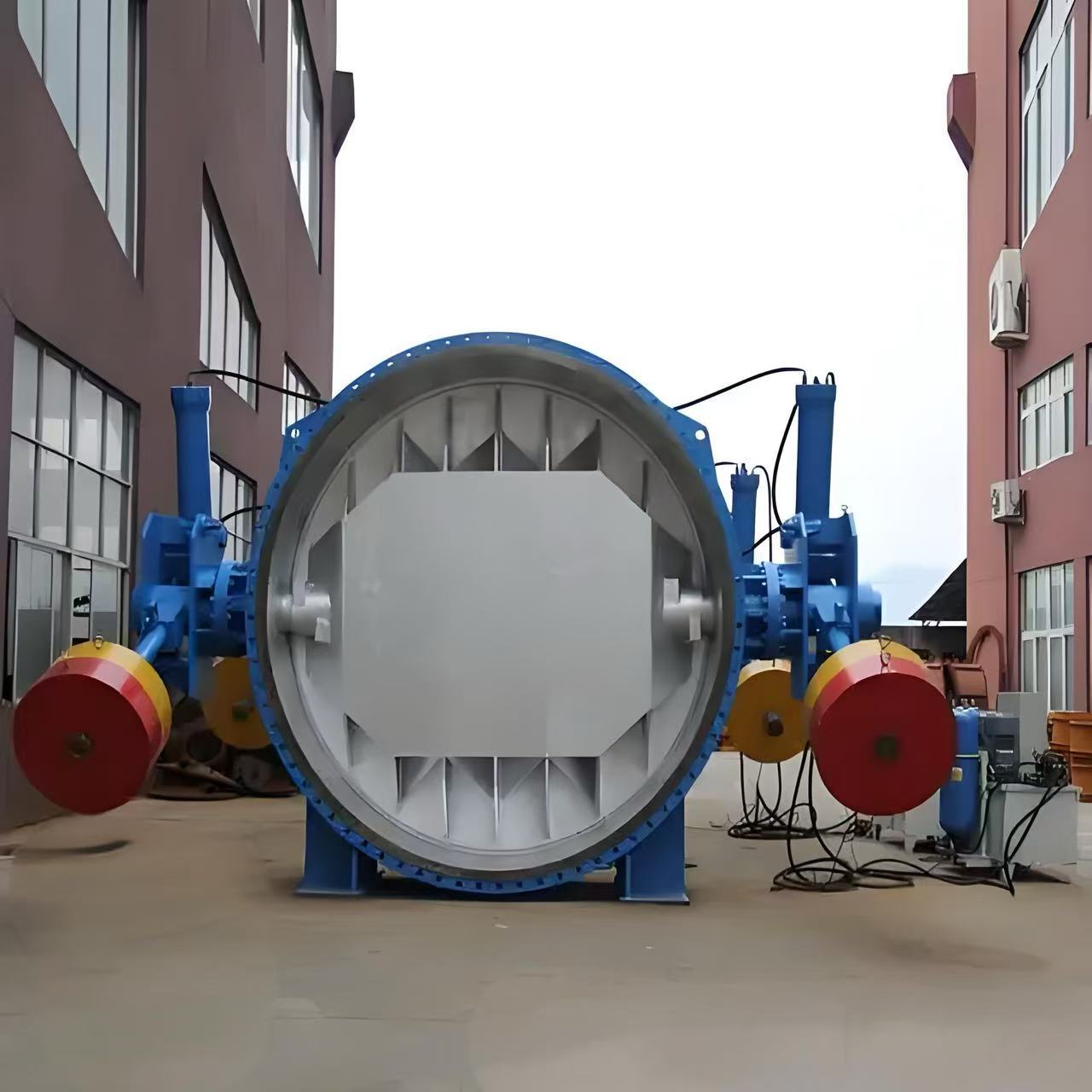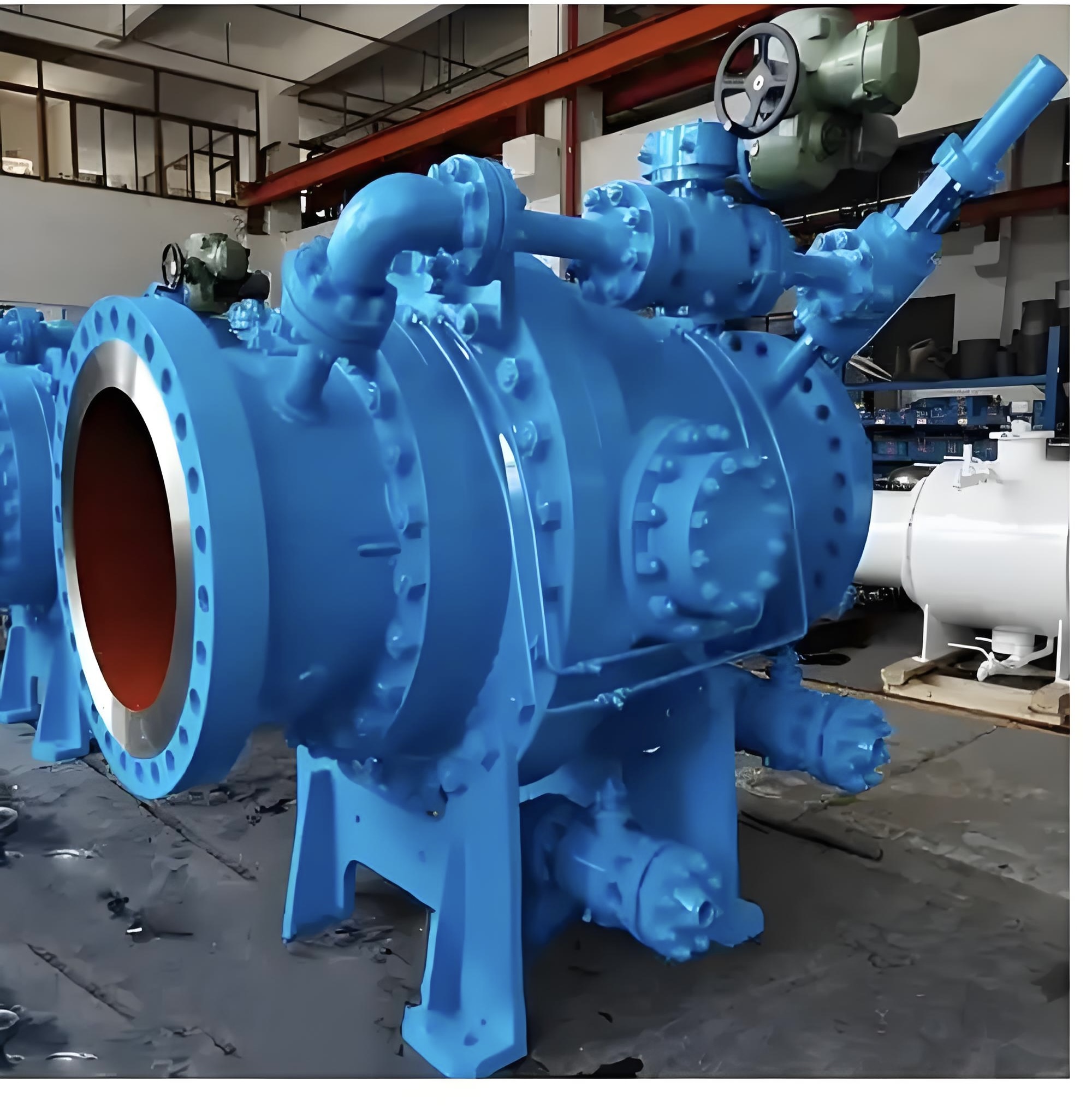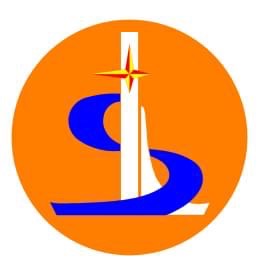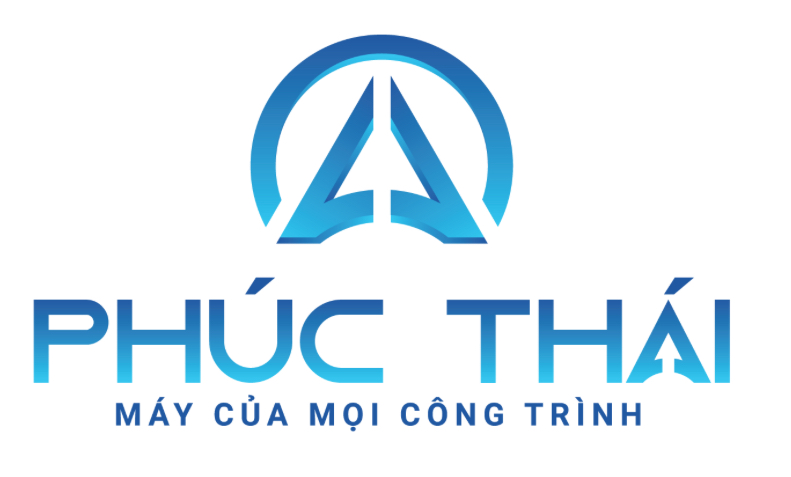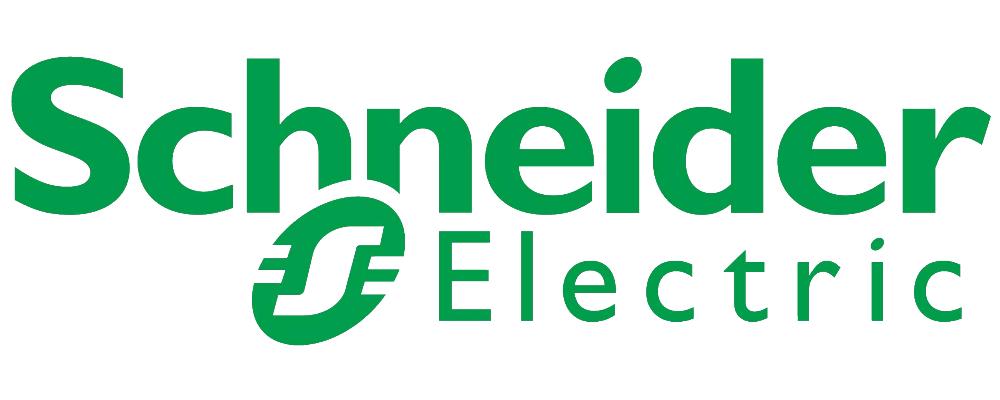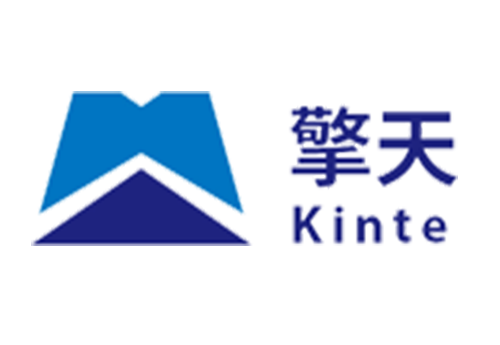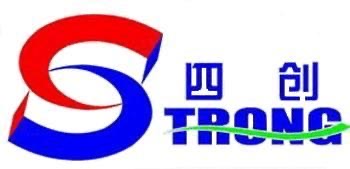Hydro-Controlled Heavy Hammer Inlet Butterfly Valve
The hydro-controlled heavy hammer inlet butterfly valve is another critical control device in the water intake system of a hydropower station. Similar in function to a ball valve but different in structure, it is primarily used for rapidly cutting off or regulating water flow, suitable for medium and low-pressure, high-flow scenarios. The following is a detailed description:
1. Structure and Composition
Valve Body and Butterfly Plate: The valve body is typically made of cast iron or cast steel, and the butterfly plate is a disk-shaped structure connected to the valve body via a rotating shaft. The structure is compact and lightweight.
Sealing System: It uses rubber soft sealing (normally closed type) or metal hard sealing (high-temperature and high-pressure type). The sealing surface conforms to the edge of the butterfly plate, and the sealing performance relies on the tight fit between the butterfly plate and the valve seat.
Hydraulic Drive System: Includes hydraulic cylinders, control valve assemblies, and accumulators, which drive the butterfly plate to rotate (usually from 0° to 90°).
Heavy Hammer Mechanism: As a backup power source when the hydraulic system fails, it uses a counterweight and connecting rod mechanism to quickly close the valve using gravity.
Locking Device: Mechanical locking at fully open or fully closed positions to prevent accidental operation.
2. Core Functions
Rapid Water Flow Cut-off: The hydraulic drive or heavy hammer mechanism can close the valve within 30 to 60 seconds to prevent water hammer effects.
Flow Regulation: It achieves linear flow regulation by controlling the opening of the butterfly plate, suitable for conditions that require frequent adjustments.
Low Pressure Drop Characteristics: When fully open, the flow resistance is low (slightly higher than a ball valve), making it suitable for large-diameter, low-velocity scenarios.
Safety Interlock: It works in conjunction with the unit control system to respond to emergency shutdown signals.
3. Working Principle
Normal Opening and Closing: The hydraulic system drives the piston rod, which rotates the butterfly plate's rotation axis to achieve opening and closing.
Emergency Closing: When the hydraulic system fails, the heavy hammer falls freely and forces the butterfly plate to rotate to the closed position through a lever mechanism.
Sealing Process: During closure, the edge of the butterfly plate presses against the valve seat sealing ring (rubber or metal) to form a seal.
4. Technical Features
Lightweight Structure: Compared to a ball valve, the butterfly valve is smaller in size and lighter in weight, suitable for large-diameter installations (DN > 1.5m).
Lower Cost: The manufacturing and maintenance costs are lower than those of a ball valve of the same specification.
Fast Opening and Closing Speed: The rotation angle is small (usually 90°), resulting in a shorter action time.
Limited Applicability: In high-pressure conditions (PN > 40), the sealing performance is inferior to that of a ball valve, and long-term high pressure can cause deformation of the butterfly plate.
5. Selection and Maintenance Points
Selection Parameters:
Nominal Diameter (DN): Butterfly valves are more suitable for large-diameter applications (DN ≥ 500mm).
Pressure Class (PN): Generally not exceeding PN40, special design is required for high-pressure scenarios.
Sealing Material: Rubber sealing (≤80°C) or metal sealing (high temperature and high pressure).
Maintenance Suggestions:
Regularly inspect the wear of the butterfly plate and valve seat sealing surfaces.
Keep the hydraulic system clean to prevent core sticking.
Check the lubrication and free-falling flexibility of the heavy hammer mechanism every two years.
6. Common Issues and Solutions
Seal Leakage: Rubber aging or butterfly plate misalignment, requiring adjustment of the butterfly plate position or replacement of the sealing ring.
Jamming During Opening and Closing: Valve shaft corrosion or foreign objects stuck, requiring cleaning and application of lubricating grease.
Heavy Hammer Failure: Insufficient counterweight or connecting rod deformation, requiring recalculation of the counterweight or replacement of components.
Butterfly Valve vs. Ball Valve Key Comparison
|
Feature |
Butterfly Valve |
Ball Valve |
|
Structure |
Compact, lightweight, suitable for large diameters |
Complex, bulky, suitable for high-pressure small diameters |
|
Sealing Performance |
Excellent at medium and low pressure, prone to leakage at high pressure |
High sealing performance across all pressure ranges |
|
Flow Resistance |
Slightly higher when fully open (about 1.5 times that of a ball valve) |
Nearly zero |
|
Cost |
Low (about 30%~50% of a ball valve) |
High |
|
Maintenance Difficulty |
Simple |
Complex (require valve body disassembly) |
Summary
The hydro-controlled heavy hammer inlet butterfly valve, with its economic efficiency, lightweight design, and flexible regulation, is widely used in the medium and low-pressure water intake systems of hydropower stations, especially suitable for large-diameter and frequently operated scenarios. However, its sealing performance under high pressure is relatively weak, and it should be used in conjunction with ball valves based on specific conditions.


